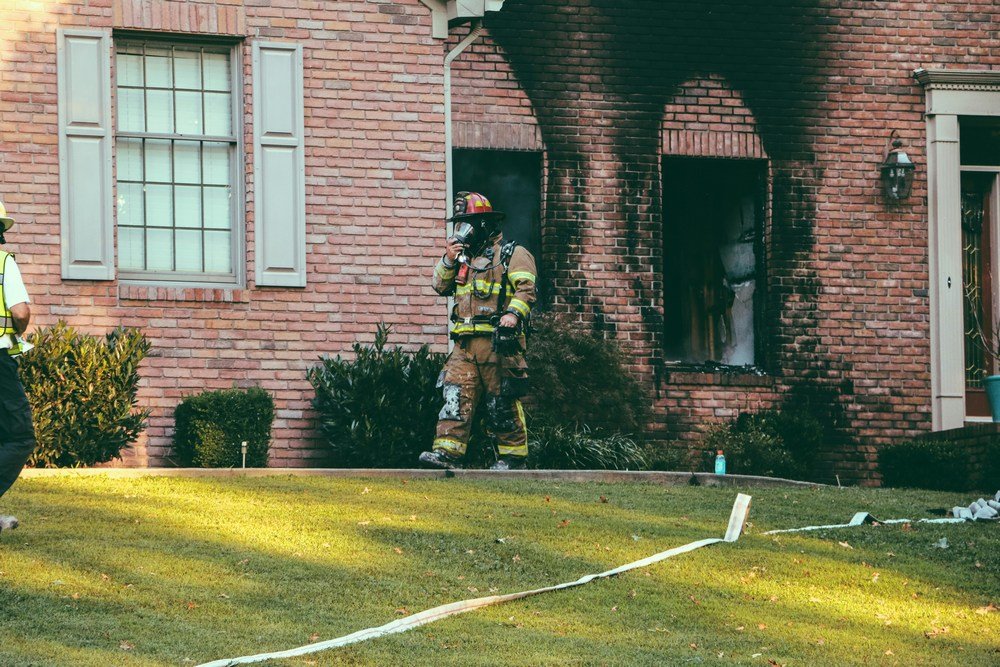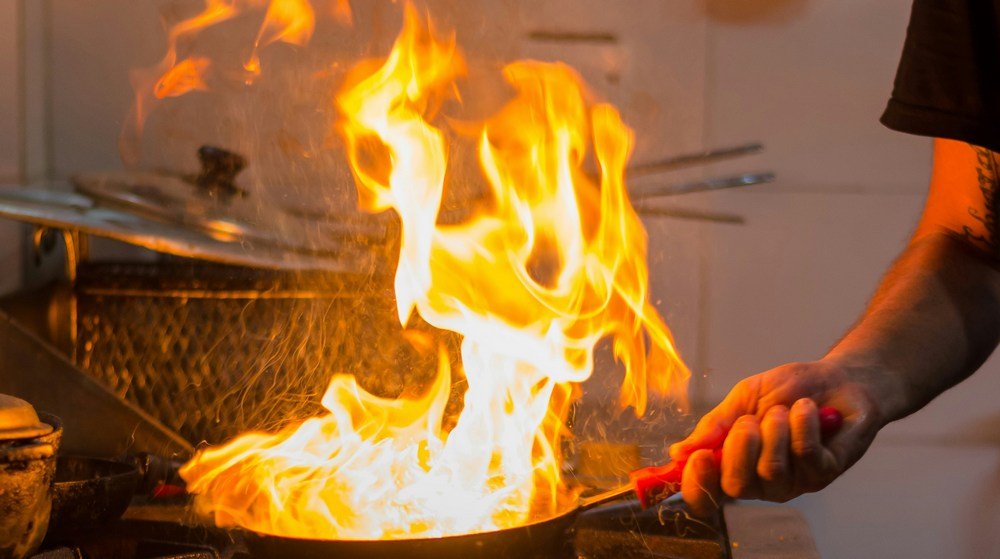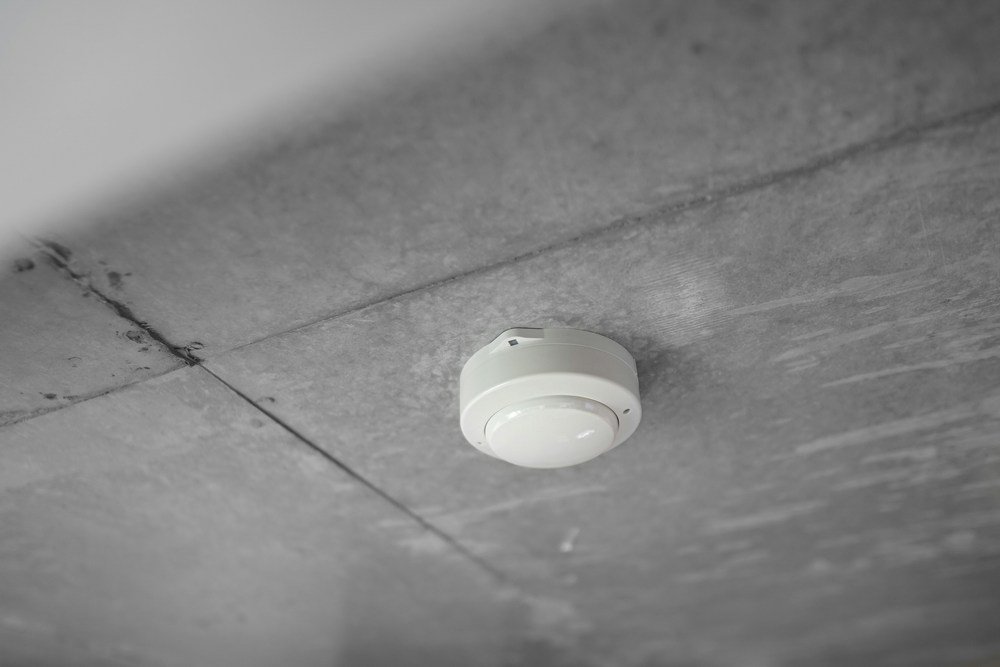Get the week's most popular posts delivered to your inbox.
Our weekly update is free yet priceless and you're less than a minute away from getting the current edition.
In the unlikely event we disappoint, you can unsubscribe with a single click!
Last Updated on November 20, 2025 by teamobn
House fires are a real risk in every home. The U.S. Fire Administration (USFA) reported over 374,300 residential fires in 2022. While nobody wants this tragic occurrence, it keeps happening. While you cannot control all the factors that may cause fires at home, you can take proactive steps to reduce fire risk and prevent an outbreak in your home. This article considers three effective strategies for fire prevention at home.
Contents
- 1 1. Fire Safety Education
- 2 2. Safe Cooking Practices
- 2.1 Keep Combustible Materials Away From Your Cooking Area
- 2.2 Never Leave the Stove Unattended
- 2.3 Keep Your Equipment and Cooking Area Clean
- 2.4 Turn Handles Away From You While Cooking
- 2.5 Wear Appropriate Kitchen Clothing
- 2.6 Keep a Fire Extinguisher in the Kitchen
- 2.7 Avoid Disposing of Hot Grease or Oil
- 3 3. Home Maintenance and Equipment
- 4 5 Common Causes of House Fires
- 5 Endnote
1. Fire Safety Education
Fire safety education increases an individual’s understanding and awareness of fire hazards, such as from fireplaces and chimneys. It also teaches individual safety practices to mitigate fire risk and how to respond to fire threats at home.
With good fire safety education, a person can recognize potential fire hazards in the home, helping them prevent outbreaks. This education also shows them how to respond in case of a fire to reduce the spread and protect themselves. Additionally, fire education instills confidence, reducing panic during evacuation.
It is important to provide fire safety education for all family members and residents in a multifamily home. All family members must learn about the fire hazards at home and how to keep them in check.
If a fire does break out despite these precautions, it’s crucial to act fast and contain it. Learn practical steps on how to stop a fire from spreading in your home by following this guide: how to stop a fire from spreading in your home.
You can also develop fire drills and safety plans and implement them regularly to familiarize everyone. Teach everyone how to use safety equipment, like fire extinguishers, and exit the building in case of a fire outbreak.
2. Safe Cooking Practices
Heat is the primary source of house fires, and the kitchen generates the most heat at home from cooking. Learning and practicing safe cooking is a key strategy for preventing house fires. Below are some safe cooking practices that can help you prevent fires at home:
Keep Combustible Materials Away From Your Cooking Area
Stay conscious and remove any material that can easily catch fire, such as packaging materials and towels.
Never Leave the Stove Unattended
Always stay in the kitchen, stand by your stove, and pay attention while cooking. If you must leave the kitchen, even for a second, turn off the burner. Avoid every form of distraction when cooking, including your phone.
Keep Your Equipment and Cooking Area Clean
Built-up grease on your stovetop, bread crumbs in the toaster, and accumulated dust behind appliances are fire hazards. Always clean your cooking equipment and area to prevent fires, even in cultural cooking.
Turn Handles Away From You While Cooking
Position your pots and pans so that the handle always faces towards the back of the stove. This way, you’ll prevent bumping into it or children grabbing it to spill flammable content into the stove.
Wear Appropriate Kitchen Clothing
Appropriate kitchen clothing helps with hygiene and fire safety at home. Wear short, tight-fitting clothes and roll your sleeves while cooking. Loose clothing can easily come into contact with flame or heat from electric burners and catch fire.
Keep a Fire Extinguisher in the Kitchen
Subtle fires may erupt despite your best efforts. A fire extinguisher will help prevent such fires from spreading. Keep an appropriate and functional fire extinguisher around the kitchen and learn how to use it. You can also keep a pan lid or baking sheet and use these to cover a pan in case it catches fire.
Avoid Disposing of Hot Grease or Oil
Oil and grease are flammable when hot. Always allow them to cool down before disposing of them in the garbage or down the drain.
3. Home Maintenance and Equipment
Routine checks and maintenance of home electrical systems and appliances is an excellent way to prevent fires. This is especially important because most electrical installations are fire hazards.
Nevertheless, general home maintenance is another excellent way to prevent fire. Such maintenance involves installing some safety equipment for fire prevention and control. Below are some examples of home equipment for fire prevention and control:
Smoke Detectors and Alarms
Smoke detectors provide a warning of a fire threat, allowing individuals to extinguish fires from the source or evacuate the premises. They are an excellent tool for fire prevention, and they are easy to install, use, and maintain.
You only need to ensure the device batteries are always charged and properly inserted into the detector. Your bedroom, stairways, and hallways are excellent places to install a smoke detector. You can also install one strategically in a kitchen to detect fire outbreaks early. 
Floor Latches
A water-tight floor hatch is an excellent safety feature in moisture and flooding-prone areas. They conceal and protect many vital components and critical systems beneath floors and between building levels.
It is a recommended fire safety feature for houses with electric systems and components beneath the floor. Your hatch protects these systems from the elements, reducing house fire hazards.
Firedoors
Fire doors are excellent fire safety fortification elements in a home. They help compartmentalize and restrict the spread of fires around the house. This helps to reduce property damage and allows people to evacuate a building in case of a fire. Fire doors are legally required for residential buildings with three or more stories. However, you can install one in your duplex or bungalow for your family’s safety.
5 Common Causes of House Fires
All house fires are accidents. However, many of these accidents are preventable. We know all the causes of house fires. When a house fire occurs, it is often due to negligence or poor safety practices.
Now you know the top safety practices and strategies against a house fire. Below are the five most common causes of house fires to help you further protect your home and family:
- Carelessness in the kitchen
- Faulty wiring and outlets
- Alternative heating sources, like old space heaters
- Cloth dryers
- Dirty chimneys
Endnote
House fires are a real risk today. Fortunately, you can prevent fires at home with good safety strategies. Start with fire safety education for all family members. Then, learn and implement safe cooking practices. Finally, implement good home maintenance practices and install safety equipment around the house. These effective strategies will protect you against the most common cause of house fires.
Get the week's most popular posts delivered to your inbox.
Our weekly update is free yet priceless and you're less than a minute away from getting the current edition.
In the unlikely event we disappoint, you can unsubscribe with a single click!






